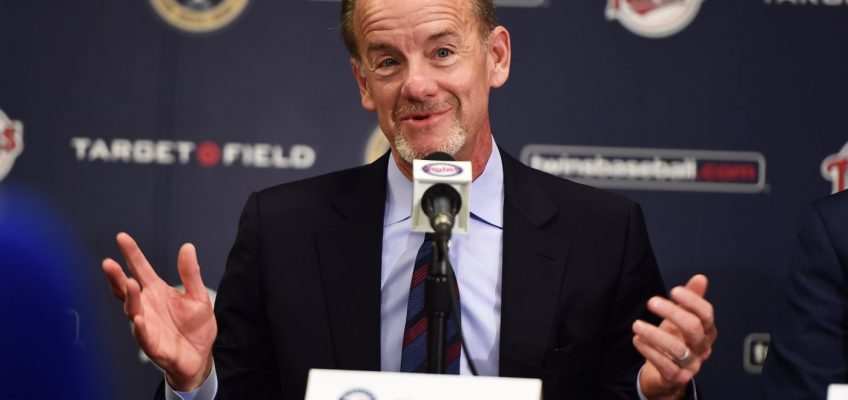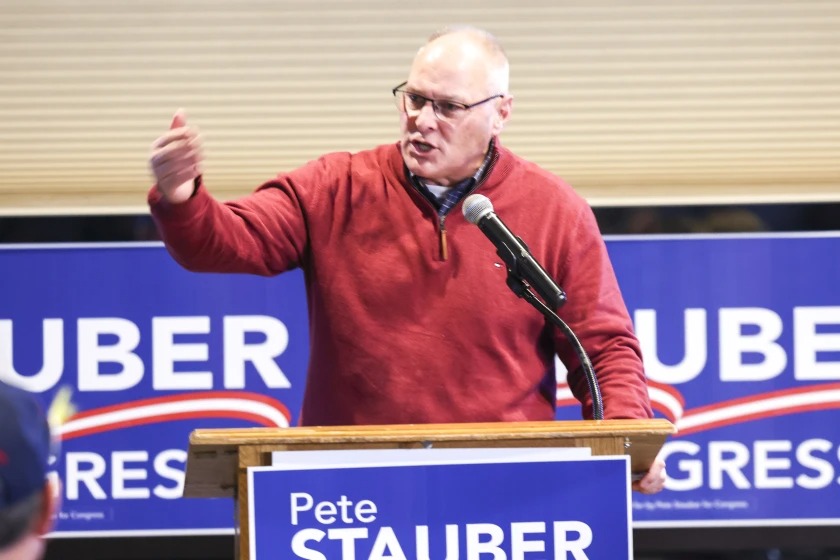There has been misguided reporting elsewhere that a sale of the Minnesota Twins is expected to be done by Opening Day this season.
The Pohlad family, which owns the Twins, announced in October that it was exploring a sale of the Twins. The Pohlads never announced they were selling the team.
If the Pohlads don’t get the price they want, expected to be in the $1.8 billion range, there’s a scenario that they retain ownership of the club. There is also a scenario that they retain just a part of the team.
Overseeing a potential sale is Steve Greenberg, the son of Hall of Fame baseball player Hank Greenberg.
The Pioneer Press reported three weeks ago that the Ishbia family that bought the Phoenix Suns for $4 billion a year ago was cocksure it could acquire the Twins, but that it also could have an exclusive option to buy the Chicago White Sox from Jerry Reinsdorf, who on Tuesday will turn 89 years old. Now, the New York Times reports that billionaire Justin Ishbia has abandoned his bid for the Twins to “boost his stake” in the White Sox.
>> It’s been more than a month since the Vikings extended coach Kevin O’Connell’s contract. Meanwhile, the team still hasn’t extended general manager Kwesi Adofo-Mensah.
The delay is intriguing. O’Connell and Adofo-Mensah were hired three years ago with four-year contracts. In the summer of 2020, the Vikings extended coach Mike Zimmer, then a week later GM Rick Spielman.
After three underwhelming drafts, it could be that Vikings owners Zygi and Mark Wilf are waiting until April’s draft to further evaluate Adofo-Mensah.
>> The NHL’s new team salary cap limit of $95.5 million next season means it could cost the Wild nearly $153 million over eight years to retain star Kirill Kaprizov.
That’s $19.1 million a season.
Kaprizov, 27, is playing for $9 million this season in the fourth year of a $45 million, five-year contract, after which he can become a free agent. He can re-sign next July 1.
The NHL labor agreement is that no player can get more than 20% of the entire team cap. It will be surprising if Kaprizov isn’t offered 20%, and surprising if he didn’t accept it.
Four years ago, Kaprizov turned down the Wild’s guaranteed $72 million, eight-year offer for his current deal. A consideration for the left wing, though, is that if he accepts the maximum eight years next time, and the salary cap continues to grow, after five years he could see some two dozen players surpass him in salary.
The Wild have the right to make Kaprizov an offer a year before any other team can. If he’s offered the maximum, it will be hard to say no.
Kaprizov, who is from Russia, appears to enjoy playing in Minnesota. As for his free agent options, not all NHL teams can afford to give a player 20%. The Wild, however, can afford the maximum, and probably will have to offer that.
Kaprizov is the face of the Wild. Check out the number of No. 97 fan jerseys at a Wild game. He is worth the price of admission.
“We will make it work,” Wild owner Craig Leipold told the Pioneer Press in December.
There are some great players in the NHL, some even better players than Kaprizov. But Kaprizov has played really well in Minnesota, and Minnesota loves him.
>> That was Leipold at Mayo Clinic undergoing spine surgery last week to relieve acute hip pain. Meanwhile, he ranks No. 7 on The Hockey News’ new “Top 100 People of Power and Influence” in the sport. No. 1 is NHL commissioner Gary Bettman.
>> The NFL’s anticipated salary cap increase of about $6 million for next season isn’t expected to increase chances of the Vikings signing free agent QB Sam Darnold, but it should help in retaining other free agents, in particular cornerback Byron Murphy. That’s because each of the league’s 32 teams will get the same increase.
>> It still looks as if the Raiders or Steelers are most likely Darnold’s next team.
>> Look for the bronze statue of Twins Hall of Famer Joe Mauer that will be dedicated on April 13 to be located near Gate 34 in front of Target Field, near the statues of fellow Twins Hall of Famers Kirby Puckett and Harmon Killebrew.
The statue of Mauer, who was a .306 lifetime hitter, sculpted by Bill Mack, will be of him as a catcher.
>> By the way, the bronze statue of former Twins owner Calvin Griffith, removed outside of Target Field five years ago because of racist comments he made in Waseca in 1978, remains in the Twins’ archives.
>> It was 45 years ago Saturday that the Herb Brooks-coached USA Olympic men’s hockey team upset the Russians en route to winning the gold medal in 1980 in Lake Placid, N.Y.
Brooks, from St. Paul, was 66 when he died in a car crash in 2003. He is buried at Roselawn Cemetery in Roseville.
“I was there yesterday,” Patti Brooks said last week. “I go out there often.”
Patti is Herb’s widow. There is no shrine to Herb’s monumental hockey achievements at his burial site, just a plain, flat, indistinct concrete gravestone.
There are hockey pucks on Brooks’ gravestone placed by respectful fans.
“They’ve been there all through the years,” Patti said. “(Fans) keep putting them there.”
Roselawn Cemetery is 160 acres. Brooks’ gravesite is the most visited on the grounds.
Jim Craig, who played at Boston University and was the star goaltender for Brooks’ Olympic gold medal team, once visited Brooks’ gravesite in the dead of winter and had to shovel through snow to get to it.
Related Articles
Class A state hockey: Dodge County wins title over Warroad in overtime
Women’s hockey: Murphy’s unlikely goal stands up as Gophers finish regular season with sweep of Bulldogs
Loons lament missed opportunities in season-opening loss at Los Angeles FC
When the dust clears, Wild find a way win in Detroit
After quick rise to majors, “the job doesn’t stop” for Twins prospect Zebby Matthews
The National Bobblehead Hall of Fame has released a Craig model to commemorate the 45th anniversary. Herb Brooks would have been 87 years old today.
>> The other day at Twins spring training, after a youngster asked Royce Lewis for an autograph, Lewis signed, then asked the kid to sign Royce’s hat. The classy Twin asks kids to sign his hat so he remembers them next time.
>> Cretin-Derham Hall’s 6-foot-7 basketball sophomore wing Ty Schlagel already has offers from Minnesota, Iowa and Wisconsin. Junior 6-2 guard JoJo Mitchell has offers from St. Thomas, Colorado State, Wyoming and South Dakota State. Senior Tommy Ahneman, 6-10, has committed to Notre Dame.
Ahneman, by the way, is nearly a duplicate of 6-10 former Detroit Piston star Bill Laimbeer, who also played collegiately at Notre Dame.
>> The Steelers defeated the Vikings 16-6 in the 1975 Super Bowl at Tulane Stadium in New Orleans while the Superdome was being built. Ticket price was $20. The average ticket price for this year’s Super Bowl at the Superdome, where the Chiefs defeated the Eagles 40-22, was $6,000.
>> As of last Friday, just 36 tickets remained (date unannounced) for the Packers-Vikings 2025 game in Minneapolis, per stubhub.com. Cheapest ticket: $461.
>> On Friday, the Gophers baseball team plays at Arizona State, which next year will have 34 full scholarships for its 34 players. Meanwhile, the Gophers are expected to share 11.7 scholarships among 36 players.
>> St. Paul’s Dennis Ryan, the recently retired longtime Vikings equipment manager, is a finalist for the Pro Football Hall of Fame’s Awards of Excellence.
>> Sauk Rapids’ Anthony Bemboom, 35, who played in 82 major league baseball games as a catcher between 2019-2023 with different three teams, is retiring.
>> Willmar’s Jordan Smith, 34, a star outfielder at St. Cloud State before spending several seasons in Cleveland’s minor league system, this season will be manager of Guardians’ Class A Lynchburg Hillcats.
>> Prayers are welcome for Bob Hoffman, the ultimate Gophers sportsman from Waseca who is at Mayo Clinic undergoing treatment following several surgeries.
>> The national Football Film Federation convention for college and high school video staffs will be April 26-27 at Mall of America.
>> This week’s Sports Illustrated has an eight-page spread on St. Paul-born skier Lindsey Vonn.
>> Boden Sampair from Hill-Murray is the fourth Sampair family member over the years to be named a finalist for the Minnesota Mr. Hockey award.
>> North Oaks native Frankie Capan, playing in this weekend’s $7 million Mexico Open, was tied for 36th entering Saturday’s play.
Don’t print that
>> There were two clues why smart people felt Marc Lore and Alex Rodriguez would prevail over Glen Taylor in the recent arbitration case for the $1.5 billion sale of the Timberwolves and Lynx.
First was when Michael Bloomberg, reportedly worth more than $100 billion, joined Lore and Rodriguez to infuse cash for ownership. Secondly, last fall while the arbitration hearing was underway, Taylor’s lawyers quietly subpoenaed the NBA for records and assorted documents, which couldn’t have delighted the league.
>> No doubt Lore, and not Rodriguez, will be controlling owner if the Wolves-Lynx sale becomes official. And it wouldn’t be surprising if Lore decides he doesn’t need Rodriguez and his baseball steroid-past as a partner.
>> Since Taylor agreed to sell to Lore and Rodriguez nearly four years ago, the value of the Wolves-Lynx has doubled. Taylor told the Pioneer Press two years ago that he had no reqrets about his decision to sell, that he had made his decision with the information he had at the time.
>> Before the outcome of the arbitration hearing, Taylor was asked by the Pioneer Press if he would be interested in buying the Twins. He said he would need to resolve his arbitration before considering the Twins.
>> If Lore and Rodriguez end up with the Wolves-Lynx, it’s certain they will seek public financing for a new arena. NBA arenas now cost at least $1 billion to build. One site that has been quietly mentioned for the Wolves-Lynx is just southeast from Mall of America in Bloomington.
>> A little birdie says Kevin Garnett will become part of the Timberwolves’ front office as soon as it’s official that Lore and Rodriguez get ownership.
>> There’s an outside chance that QB Matthew Stafford and Vikings coach Kevin O’Connell, who was offensive coordinator for the Rams’ Super Bowl season of 2021, could be reunited if Stafford can’t work out a new contract with the Rams.
>> O’Connell, the NFL coach of the year last season, now is 50-1 odds to repeat next season, per SportsBetting.ag.
>> There is no chance of Aaron Rodgers, 41, disposed of by the Jets, coming to the Vikings. The last thing O’Connell needs is that headache.
>> Aside from a season-ending collapse, notable victories at USC and UCLA last week should now make it an easy call to retain Gophers men’s basketball coach Ben Johnson, who is signed through 2027. Johnson has proven all he needs to win is more name, image and likeness (NIL) cash.
Johnson should be helped on July 1, when NCAA schools can begin spending up to $20 million a year to buy athletes in addition to NIL money.
>> Entering Saturday’s game against Penn State, of the 334 Division I men’s basketball teams in the nation, the Gophers ranked No. 91. The NCAA tournament starts with 68 teams.
>> Ran into Al Geiberger, the first PGA Tour golfer to shoot 59 (1977 Memphis Classic), the other day in Palm Desert, Calif. Geiberger, 87, played on two USA Ryder Cup teams and recounted an experience with teammate Lee Trevino.
It happened that a European golfer of note had won both his matches entering the final day, and would be playing Trevino in his last match. In the clubhouse before the match, Trevino vowed that he would defeat the European or kiss each of his USA teammates’ backsides.
Trevino subsequently lost and, Geiberger told the Pioneer Press, when he entered the clubhouse each of his teammates were bent over with trousers pulled down.
>> Pssst: Just weeks after accepting the head football coaching job at Cretin-Derham Hall, former Lakeville South coach Ben Burk has had second thoughts and decided he doesn’t want the Raiders job after all.
The obvious successor would be Dan O’Brien, the highly successful former St. Thomas Academy and Holy Angels coach whose son Casey is a 2017 CDH grad. Insiders say Dan O’Brien is interested.
>> While coach Johnny Tauer’s work with the University of St. Thomas men’s basketball team could someday warrant membership in the Big East, the school’s football team seems destined long term in the no-scholarship Pioneer Football League.
>> With 6-9, 250-pound Pharrel Payne’s exit from the Gophers for $500,000 and a new Mercedes, Texas A&M has risen to No. 7 nationally in men’s basketball.
>> New golf head professional at Edina Country Club will be Adam Chandler, formerly of TPC in Blaine.
>> Because Jared Allen was recently elected to the Pro Football Hall of Fame, don’t be surprised if the Vikings are named to play in the annual Hall of Fame game in Canton, Ohio, on July 31.
>> The NFL is considering up to eight international games for next season. If the Vikings are picked, it won’t be as a home team. That’s because, per their stadium lease, from 2026 to 2030 the Vikings can give up just one home game to play internationally.
>> Ex-Vikings QB Matt Cassel, 42, asked the other day if there was one thing he could change about his 15-year career, it would be staying in Minnesota in 2014 rather than having been traded to Buffalo.
>> Simley grad Michael Busch, 27, after playing for $741,500 with the Cubs last season and hitting 21 home runs, will play this season for $800,000.
Overheard
Patti Brooks on the 45-year anniversary Saturday of husband Herb’s USA Olympic men’s hockey team upsetting the Russians en route to winning the gold medal in 1980 in Lake Placid, N.Y.: “It’s funny because sometimes it seems like just yesterday, and then it seems like another lifetime ago. It does seem like 45 years when I look at the wrinkles on my face.”
Related Articles
Charley Walters: Raiders make a lot of sense for Sam Darnold
Charley Walters: Vikings fans should fret over Kevin O’Connell trade rumor
Charley Walters: Vikings coach Kevin O’Connell is going to strike it rich
Charley Walters: J.J. McCarthy could get another redshirt year behind Sam Darnold




